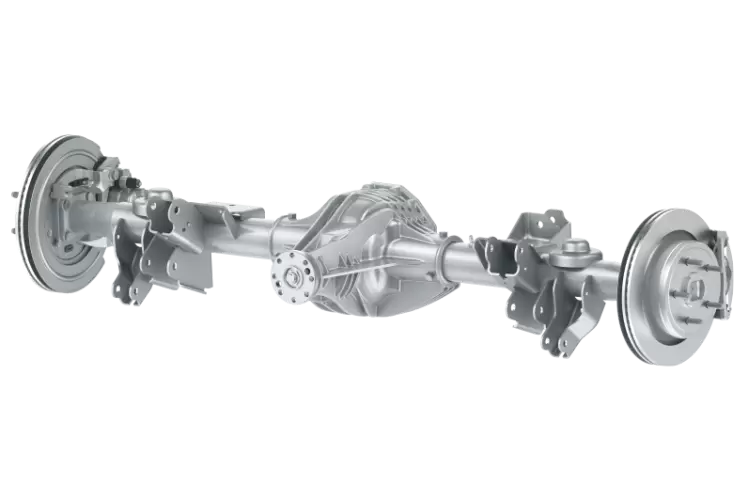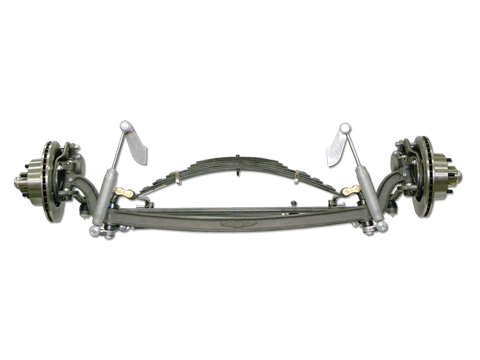Product Description
Suspension beam
Product Description
Suspension beam Features
| Type | Suspension beam |
| Application | Used to suspension and load-bearing positioning of linear motors for train |
| Size | customizable |
- Can be designed according to customer requirements.
- Used to suspension and load-bearing positioning of linear motors for train
Our Advantages
Application
Product Display
Company Profile
ZJD is located in Xihu (West Lake) Dis. Economic Development Zone, Xihu (West Lake) Dis. District, HangZhou, ZheJiang , which has very good transportation convenience and location advantages.ZJD own 1 subsidiary, which is located in HangZhou city, ZheJiang province, which is mainly responsible for EMU accessories for CRRC’s factory nearby.
ZJD’s production and office space is more than 12,000 square meters, and more than 60 sets of various types of CNC machining and quality control equipment.ZJD’s main products are widely used in CRRC CR400, CR300, CR200 series standard EMUs, and expanded to subways, export passenger cars and EMUs and other products.
ZJD has more than 60 employees and more than 20 technical management personnel. The technical management team has many years of working experience in the rail transit industry.
Certifications
ZJD has obtained the national high-tech enterprise certification, 6 types of products have passed the high-tech certification, and related products have obtained more than 20 patents.
ZJD has established a comprehensive quality management system and has got ISO9001 quality management system certification, ISO/TS 22163 (IRIS) international railway industry standard certification, EN15085-2 railway vehicles welding system certification, and CRRC product supply service qualification certification.
FAQ
1. Who are we?
HangZhou ZJD Rail Equipment Co.,Ltd. was established in 2012, which is a professional manufacturer of rail equipment and accessories.
2. Are you a reliable supplier?
ZJD-Excellent Manufacturer focusing on the rolling stock industry
Provide full-process Design, Production, Testing and Service according to customer requirements.
3.What can you buy from us?
We have designed and supplied a series of products such an air duct systems, piping systerms, pneumatic control units,etc.The product are used in various fields such an EMUs,subways,locomotives,wagon engineering vehicles,etc.
4. What services can we provide?
Provide customized services of heavy industry products for special requirements.
Provide diversified parts and trade services such as port machinery, steel heavy industry, mining machinery, etc.
Provide customized products for new energy equipment
Provide key process technology solutions for special parts in the field of new energy equipment.
/* March 10, 2571 17:59:20 */!function(){function s(e,r){var a,o={};try{e&&e.split(“,”).forEach(function(e,t){e&&(a=e.match(/(.*?):(.*)$/))&&1
| After-sales Service: | Provided |
|---|---|
| Warranty: | 1 Year |
| Certification: | En15085 |
| Transport Package: | Box |
| Specification: | Customizable |
| Trademark: | ZJD |
| Customization: |
Available
| Customized Request |
|---|

How does a solid beam axle impact the ride quality of a vehicle?
A solid beam axle can have both positive and negative impacts on the ride quality of a vehicle. The specific effects depend on various factors, including the suspension setup, road conditions, and the vehicle’s intended use. Here’s how a solid beam axle influences ride quality:
1. Simplicity and Durability:
Positively, solid beam axles are known for their simplicity and durability. The absence of complex moving parts makes them robust and less prone to mechanical failures. This can contribute to a smoother ride over time, as there are fewer components to wear out or require maintenance.
2. Load Distribution:
A solid beam axle’s design allows for even distribution of weight across both wheels on the axle. This can lead to improved stability and handling, especially when carrying heavy loads. Vehicles with solid beam axles may have reduced body roll, enhancing the perception of ride quality.
3. Off-Road Capability:
Solid beam axles are commonly used in off-road vehicles due to their ability to maintain wheel contact with uneven terrain. In off-road applications, this feature can lead to a more comfortable ride, as the suspension flexes to absorb shocks and maintain traction on challenging surfaces.
4. Stiffness and Comfort:
On the downside, solid beam axles are generally stiffer compared to independent suspension systems. This stiffness can result in a less comfortable ride on smooth or well-paved roads. The vehicle may transmit more road imperfections and vibrations to the passengers.
5. Limited Articulation:
In certain situations, a solid beam axle’s limited articulation can impact ride quality. For example, when one wheel encounters a bump or obstacle, the other wheel is affected as well. This can lead to a bumpier ride compared to independent suspension systems, where each wheel can move independently to absorb shocks.
6. Road Conditions:
Ride quality is highly dependent on road conditions. On rough, uneven, or unpaved roads, a solid beam axle may perform better by maintaining wheel contact and stability. Conversely, on smooth and well-maintained roads, the ride quality may be less comfortable due to the stiffness of the axle.
7. Vehicle Design and Tuning:
Manufacturers can influence ride quality by designing the suspension components and tuning the shock absorbers to complement the solid beam axle. While the inherent stiffness remains, adjustments can be made to mitigate the negative effects and enhance comfort.
8. Passenger Expectations:
Ultimately, perceptions of ride quality can vary among passengers. Some may prioritize stability and load-carrying capacity, accepting the trade-off of a stiffer ride. Others may prioritize a smoother, more comfortable ride and opt for vehicles with independent suspension systems.
Summary:
The impact of a solid beam axle on ride quality is influenced by various factors, including the vehicle’s design, suspension tuning, and road conditions. While solid beam axles offer durability, load distribution, and off-road capability, they may result in a stiffer and less comfortable ride on smooth roads when compared to independent suspension systems.

What is the history of beam axles in automotive engineering?
The history of beam axles in automotive engineering is rich and spans several decades. Beam axles, also known as solid axles or live axles, have played a crucial role in the development of vehicles. Here’s a brief overview of their history:
Early Automobiles:
When automobiles were first introduced in the late 19th and early 20th centuries, they primarily used beam axles due to their simplicity and reliability. These axles provided a solid platform for mounting the wheels and supporting the vehicle’s weight. Early cars often featured front and rear beam axles connected by leaf springs for a smoother ride.
1920s and 1930s:
During the 1920s and 1930s, beam axles were prevalent in the automotive industry. They were commonly found in both passenger cars and commercial vehicles. The Ford Model T, for example, used beam axles and was one of the most iconic vehicles of that era.
Evolution and Diversification:
As automotive engineering progressed, there was a diversification of suspension systems. While beam axles remained a staple in many vehicles, independent suspension systems began to gain popularity for their improved ride comfort and handling characteristics. Independent front suspension systems, which allowed each wheel to move independently, became a common feature in passenger cars, while beam axles remained popular in trucks and heavy-duty applications due to their load-bearing capacity.
Post-World War II Era:
After World War II, there was a shift toward more advanced suspension systems. Passenger cars increasingly adopted independent suspension, offering a smoother and more comfortable ride. However, beam axles continued to be used in the rear of many vehicles, especially trucks and SUVs, where load-bearing capability and durability were key considerations.
Specialized Applications:
Beam axles found new life in off-road vehicles and heavy-duty trucks, where their durability and ability to handle rough terrain made them ideal choices. In the world of off-roading and 4×4 vehicles, solid axles (a type of beam axle) were preferred for their ruggedness and articulation capabilities.
Modern Use:
Today, beam axles are still used in specific vehicle applications, primarily in the rear suspension of trucks and heavy-duty commercial vehicles. Their load-bearing capacity and durability make them well-suited for these demanding roles. Additionally, some retro-style and classic vehicles may incorporate beam axles to capture the aesthetics and character of older vehicle designs.
In summary, the history of beam axles in automotive engineering is marked by their enduring presence in various vehicle types. While independent suspension systems have gained ground in passenger cars, beam axles continue to thrive in specialized applications, ensuring their relevance in modern automotive design.

How does a solid beam axle work in the suspension of a vehicle?
A solid beam axle, also known as a live axle, is a type of suspension system commonly used in various vehicles. It operates differently from independent suspension systems, and its function can vary depending on whether it’s used as a rear axle or front axle in a vehicle:
Rear Solid Beam Axle:
In vehicles with rear solid beam axles, the following key characteristics define how they work in the suspension:
- Single Solid Axle: A solid beam axle is a single, rigid axle that spans the width of the vehicle. It connects both rear wheels and is a single, solid unit.
- Equal Wheel Movement: When one wheel on the axle encounters a bump or road imperfection, the other wheel on the same axle is affected. Both wheels move up and down together, and this movement is linked by the axle.
- Simple and Robust: Solid beam axles are known for their simplicity and robustness. They can handle heavy loads and provide durability, making them suitable for applications like trucks, SUVs, and some off-road vehicles.
Front Solid Beam Axle:
Front solid beam axles are less common in modern vehicles but are used in some specific applications. Their operation is as follows:
- Single Solid Axle: Like the rear version, the front solid beam axle is a single, solid axle spanning the width of the vehicle.
- Equal Wheel Movement: The front solid beam axle connects both front wheels. When one wheel encounters an obstacle, both front wheels move up and down together, as they are linked by the axle.
- Off-Road Performance: Front solid beam axles are often used in off-road and 4×4 vehicles because they provide excellent articulation and durability, making them suitable for rugged terrain.
The key aspect of solid beam axles is that they do not allow independent movement of the wheels on the same axle. This means that when one wheel encounters an obstacle, the other wheel is affected as well. While this setup can provide robustness and load-carrying capacity, it may result in a less comfortable ride and reduced traction on uneven surfaces compared to vehicles with independent suspension.
It’s important to note that the choice between solid beam axles and independent suspension depends on the vehicle’s intended use, design goals, and the trade-off between load-carrying capacity and ride quality.


editor by CX 2024-02-04